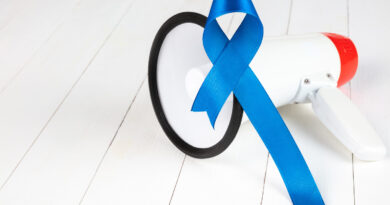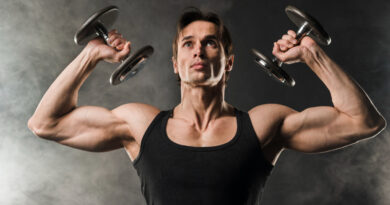How Much Caffeine Is Contained In 2 Shots Of Espresso?
It’s rare for anyone I know to begin their day without coffee. We get a boost of energy and become more clear-headed and concentrated when we face the day. Additionally, it tastes excellent.
Due to the increased consumption of caffeine-containing drinks like lattes, cappuccinos, and espresso, many people are now looking for ways to increase their caffeine intake.
This brings us to our question for the day: how much caffeine are two shots of espresso? What’s it more than just a cup of coffee?
The quick answer is that espresso contains about 150 mg of caffeine. Sure enough, that’s more caffeine than the average cup of coffee.
In light of this, is espresso healthy or unhealthy? To learn more, continue reading.
The amount of caffeine in two shots of espresso?
A “doppio,” as Starbucks calls them, is a 100–180 mg caffeine double shot. Around 60 millilitres of dark, thick coffee are made with 14 grammes of a blend of dark-roasted coffee beans.
However, “solo” is the Italian word for a single shot of espresso. Each serving contains seven grammes of coffee beans, which yields about 30 millilitres of coffee, or one fluid ounce.
What Makes a Name Choice?
We shall look at these words’ meanings.
Caffeine
No specific roast or coffee bean is referred to by the term “espresso.” In actuality, it indicates the method used to make this kind of coffee beverage.
In the early 1900s, espresso made its debut in Italy. This coffee was something entirely distinct, despite the fact that coffee had been a mainstay of Italian life for generations.
After years of adjusting their ancient coffee maker, Luigi Bezzera and Desiderio Pavoni were able to make it work. In 1903, they created a newer iteration of the machine that achieved their goal of creating a great cup of rich coffee in less than a minute.
They called this new coffee variety after the new, quick, pressurized machine, cafe espresso, to set it apart from the conventional variety.
The approximate translation of espresso in Italian is “press out.” The term refers to the pressure of the hot water as it passes through the fine coffee grinds of Arabica and Robusta coffee beans that have been dark-roasted.
Also, it might indicate “fast” or “express.” The brief amount of time needed to create espresso—typically between 30 and 60 seconds—is being discussed here.
As contrast to the standard coffee, which is brewed in a pot and usually takes three to four minutes longer, it is prepared immediately upon the customer’s order.
It’s also important to note that you can either drink espresso by itself or with a shot of milk to lessen its bitterness. Additionally, it is frequently used as the powerful, rich foundation for other beverages, such as cappuccino, latte, macchiato, mocha, and Americano, to mention a few.
A shot
Despite the fact that it’s called a shot, you shouldn’t consume it all at once.
In fact, quite the contrary. To fully appreciate its deep, potent flavour, espresso is best enjoyed slowly.
Just the size of the cup it will be served in is indicated by the word “shot.” Unbeknownst to you, espresso shots are meant to be served in glasses designed specifically for this tasty beverage.
For a single shot, they are called demitasse cups and contain around one fluid ounce apiece.
Demitasses are half the size of a typical cup of coffee, hence the French term for a “half cup.” You’ve seen this tiny white cup with the delicate handle in coffee shops countless times.
These cups can carry 60–90 ml, or 1–3 fluid ounces.
How Is Too Much Caffeine?
As previously stated, there are roughly 180 mg of caffeine in two shots of espresso. That’s a lot of caffeine in comparison to the 80 milligrammes in an 8-ounce cup of coffee!
The Food and Drug Administration (FDA) states that the daily maximum is 400 milligrammes of caffeine, or around six espresso shots. Accordingly, we can safely eat almost half as much caffeine each day from a double shot of espresso.
Consider this: most coffee shops serve a double shot as the standard order when you request an espresso. You might be startled to learn this. Therefore, bear that in mind the next time you place an espresso order.
For instance, there are about 142 mg of caffeine in a double shot of espresso at McCafe. The identical serving cup of doppio at Dunkin’, however, only contains 97 mg.
- A double espresso at Costa contains roughly 185 mg of caffeine, whereas a double shot at Caribou contains almost 270 mg!
- The level of roasting
- The kind of coffee beans that are utilised
- Whether it’s a single variety or a blend of beans
- Size of grind
- The espresso shot’s duration
- What kind of coffee beverage are you drinking?
- The size of the beverage
- If any sugar, cream, or milk is added
However, a number of factors, including the following, can influence how much caffeine is in your beverage:
Cons and Benefits of Caffeine
Tea leaves, cocoa beans, and coffee beans, of course, all contain caffeine, a natural stimulant. It functions by inhibiting adenosine, a chemical in our brains that causes us to feel lethargic and sleepy.
We so become more awake and attentive when our system stops releasing adenosine. Dopamine is a feel-good hormone that is also stimulated by caffeine. It is this hormone that gives us a more focused, energized, and generally happier feeling.
As you can see, caffeine offers a number of health advantages. However, excessive amounts of any substance, including the classic caffeine, can be detrimental.
Here is a brief overview of the advantages and potential health hazards of caffeine-rich drinks, such as espresso.

Advantages
Caffeine’s capacity to increase energy, wake us up, and make us feel alert is its first wonderful quality. Additionally, it improves our ability to concentrate, maintain attention, and be more productive all day long.
Here are some more health advantages of moderate caffeine consumption:
- It boosts long-term memory and aids in information retention.
- It has a lot of antioxidants, which help reduce inflammation,
- the possibility of developing chronic illnesses and even some forms of cancer
- increases strength, speed, and general performance by inducing the release of adrenaline.
- It has few calories and is frequently used to aid with weight loss.
- It might reduce the chance of developing Type 2 diabetes.
- It has been connected to a decrease in mood disorders, anxiety disorders, depression, and other mental health issues.
This diuretic helps your body get rid of extra water and salt by increasing the output of urine.
Drawbacks
More than four double shots of espresso a day might cause jitters and anxiety instead of alertness and focus. The reason is that it raises blood pressure and heart rate, which are short-term negative effects.
Additionally, it might cause insomnia by making it more difficult for you to go asleep if you consume it later in the day. Keep in mind that the caffeine in a double shot of espresso has an average half-life of five hours.
Let’s say you have a double shot late in the afternoon, at approximately five o’clock. This implies that long after 10 p.m., the caffeine will still be in your system. You’ll probably be up for the better part of the night. You’ll still be unable to fall asleep in the second half, and you’ll feel uneasy from caffeine withdrawal.
Few people also take into account the fact that it is unsafe to consume any kind of caffeine-rich beverage on an empty stomach, particularly one as strong as espresso. The beverage’s acidity can aggravate your digestive system and cause nausea and vomiting.
The following individuals should refrain from having more than a few double shots during the day:
- Expectant and lactating mothers
- The epileptics
- Individuals who suffer from arrhythmias, or abnormal heartbeats
- Teenagers and children
Bottom Line
So, how much caffeine is in two espresso shots? About 180 milligrams, about half of the daily recommended dosage. Therefore, you can take up to four shots a day without going excessive. To properly reap their effects, make sure they are at least four hours apart.
However, you must be aware that a number of factors might influence how much caffeine is in espresso. These factors include the coffee beans’ quality, the grind type, and the roasting method.
A latte can be made by mixing one or two shots of espresso with a few ounces of steamed milk if the strong, strong flavour of espresso is too strong for you. For a smooth, delectable cup of cappuccino, you can also add a final layer of foam.




